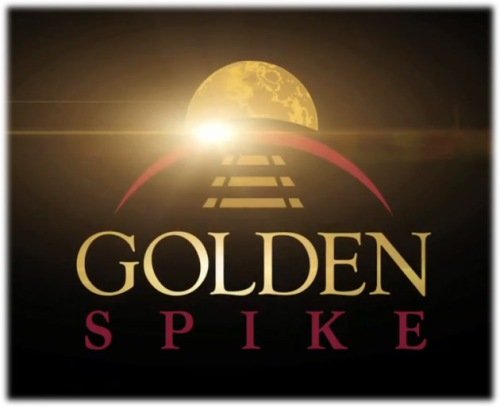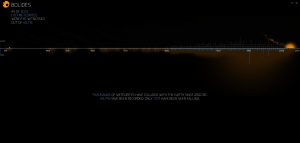Can we agree by national consensus about just one thing? That we must follow this up with something even better and more grand? Say to yourself… aloud… the following words.
"I am a member of a civilization that does stuff like that."
If that is not a tonic against cynicism, I cannot imagine there being any hope for you, alas.
Take just one glimpse of what Kepler did for us… planets called Kepler-62e and -62f, are by far the best candidates for habitability of any found so far, and because of their sizes and orbits, the newfound planets are likely either rocky—like Earth—or watery, NASA scientists said. Also see Kepler's Greatest Hits: Water Worlds, Tatooines and Earth Twins. And an animation of the new exoplanets found by Kepler.
== The Barnstorming Era in Space Begins ==
In another posting -- and in a fascinating panel discussion for the Reinventors Network with Chris McKay, Geoffrey Landis and others -- I have described how our entry into a new "barnstorming era" will feature an exceptional number of bold private or semi-private ventures in space. I've lately posted and spoken about the Mars proposals... and next week the topic will be starships!
But let's turn back to the "middle horizon" of the moon -- not (I'll admit) may favorite destination, scientifically or economically. But still transfixing. Golden Spike is a moon-aimed venture that stands in that intermediate territory, between the hugely ambitious (and iffy) Mars One and Inspiration Mars missions and the far more near-term and already commercially viable SpaceX and Virgin Galactic concepts. (My favorite, Planetary Resources, also fits in the intermediate zone, aiming for a destination that might make us all rich.)
Golden Spike hopes to create the infrastructure for manned, round-trip jaunts to the Moon's surface, for less than a billion dollars each. Tallyho you rich dudes. I totally approve. Amateur space flight is one excellent recycling system for excess-toxic accumulations of lucre, in ways that will eventually lower the costs for everyone else. (Also illustrated in some vivid scenes from Existence. )
Now: James Fallows at The Atlantic interviewed Eric C. Anderson, a co-founder and chairman of Space Adventures, a company focused on sending people to space. Mining asteroids is seen as a key component to making such travel possible.
Why go? Well, famed physicist Stephen Hawking says: Mankind must colonize space to survive.
== NASA Corner ==
From my recent service as a member of the Advisory Board for NIAC (NASA Innovative and Advanced Concepts) group: A supersonic, bidirectional flying wing idea comes from a team headed by GeCheng Zha, an aerospace engineer at Florida State University. In this revolutionary (and kind of unnerving) concept, a midair transformation allows the aircraft to fly in its most fuel-efficient modes at both subsonic and supersonic speeds. Jet engines atop the aircraft would stay aimed in the travel direction. But after takeoff and subsonic cruise, the aircraft would then rotate under the engines to present its narrow cross section forward, allowing rapid and smooth acceleration to supersonic flight. A real brain twister, but intriguing!
NIAC liked the idea enough to give Zha and his colleagues a $100,000 grant (and I offered some friendly advice.) But the U.S. space agency does not expect such funded concepts to test fly for at least another 20 years or so.
Here's another. See this NASA Animation: Asteroid Retrieval & Utilization Mission aims to robotically capture a small near-Earth asteroid and direct it into a stable lunar orbit where astronauts can explore it. An excellent concept with just the right combination of plausibility and ambitious reach, that's also very compatible with the notions of Planetary Resources and Deep Space Industries. An excellent mid-future goal, with some potential for unleashing a cornucopia.
Alternatively, will we mine the moon?
Meanwhile, NASA's still in the game of developing great big boosters. The agency's new Space Launch System is on track for a 2017 launch of a Mars bound rocket.
More than skin deep….NASA’s Mars Icebreaker Mission would drill about a meter below the icy surface of the northern plains of Mars, looking for organic biomarkers as evidence of life on the red planet. The mission would likely launch in 2018.
Some news for you open source nerds! NASA has switched to using Debian 6 Linux for the 80 working laptops and LAN network aboad the International Space Station (ISS.)
The guts of NASA's newest cubesat test satellite? A Nexus Android phone. Phone-sat will see how little more is needed to operate in space, take Earth pix and self-diagnose before burning up. Get familiar with Cube-Sats. They are how "barnstorming" can happen at the low-cheap end, where universities, small companies and even passionate clubs may get to try something out. If combined with cheap, easily deployed solar sails (coming at last) we could see much of the solar system opened up for the Age of Amateurs.
Aw heck, you've already seen Space Oddity, but in case you've been hiding in a closet, here's the viral video from Commander Mark Hadfield recorded aboard the ISS -- this singing astronaut gives a terrific weightless version of David Bowie. Zowee!
== More Space Miscellany ==
The age determination of a deep-drill core from the Pacific Ocean showed that the supernova explosion must have occurred about 2.2 million years ago, roughly around the time when the modern human developed. Isotopic inspection of bacterial fossils containing tiny crystals of magnetite (Fe3O4) show some iron isotopes that would have decayed by now if not caused by a very recent supernova. We know lots more about the (pre-Noah) past than some folks allow into their philosophy, alas. In this case, it makes you envision our australopithecine forebears staring up, in wonder. And changing.
Cool..Dramatic look at earth's past! Bolides -- An interactive animation showing every eye-witnessed meteorite impact thru Earth's history -- 1,107 eye-witnessed meteorites as of 2013.
Are we at a turning point in space exploration? See Neil deGrasse Tyson's latest book: Space Chronicles: Facing the Ultimate Frontier. No one can say it better than Tyson -- who argues that we must regain our curiosity and enthusiasm for what lies beyond.
And now, from the sublime to the ridiculous? Alien? Subhuman primate? Deformed child? Mummified fetus? The Internet is buzzing over the nature of "Ata," a bizarre 6-inch-long skeleton featured in a new documentary on UFOs. "A Stanford University scientist who boldly entered the fray has now put to rest doubts about what species Ata belongs to." The "news" is that Ata's DNA is human. Okay, no aliens. Phew. But why no provenance, peer-reviewed articles, outside validations or systematic investigations? I have to tell you, something smells fishy. I keep a "sci fi corner" of my mind ready, always, for something fantastic to come into our world. But 99% of the time, I am rewarded by my scientific side riding herd on wild enthusiasms.
There is a reason that science mostly works. It incorporates skepticism… or it ain't science. Fiction is great. It's important. But it is fiction.


